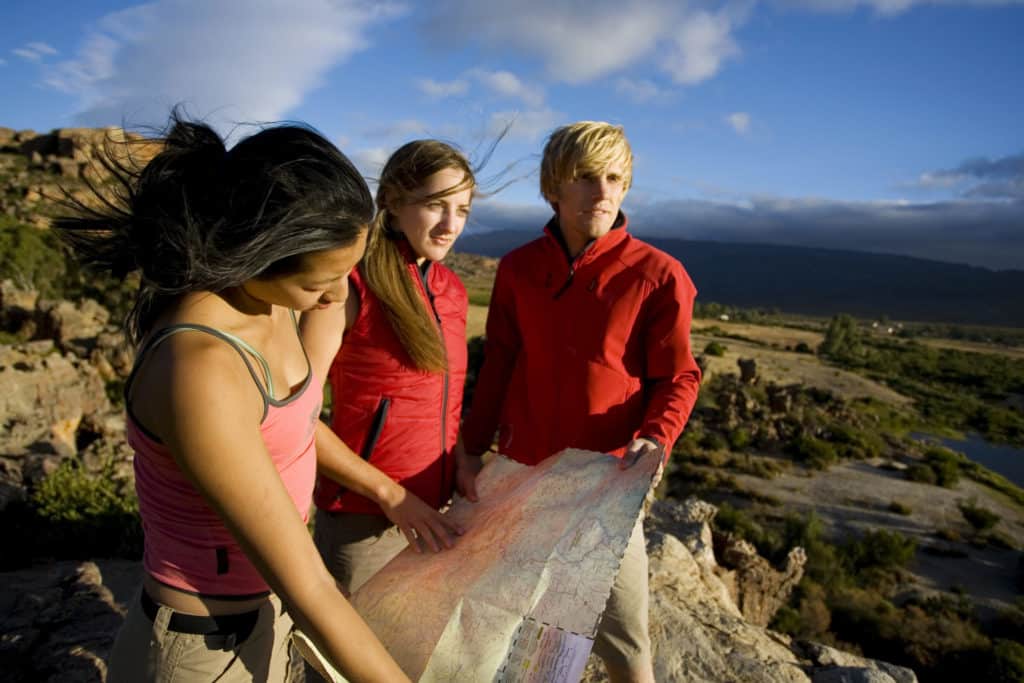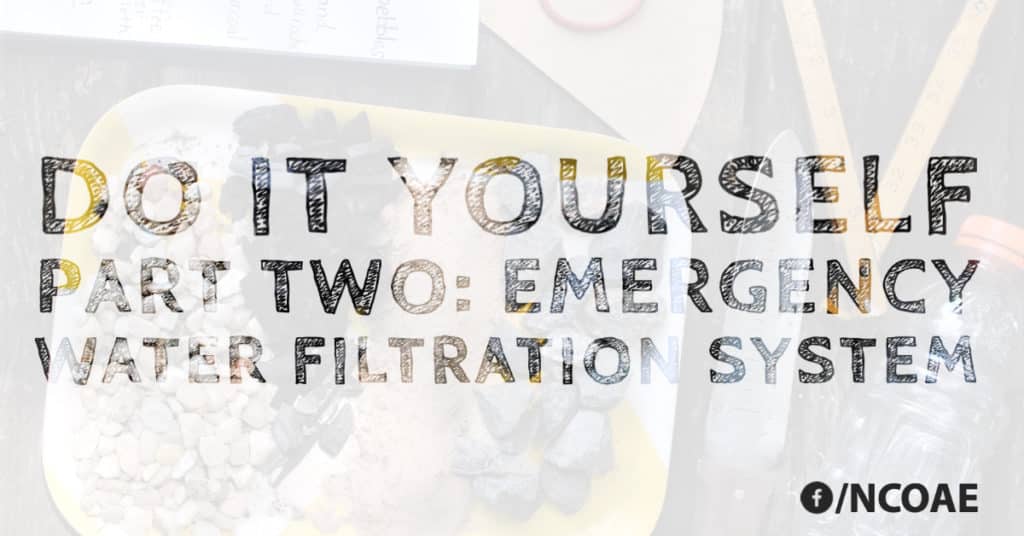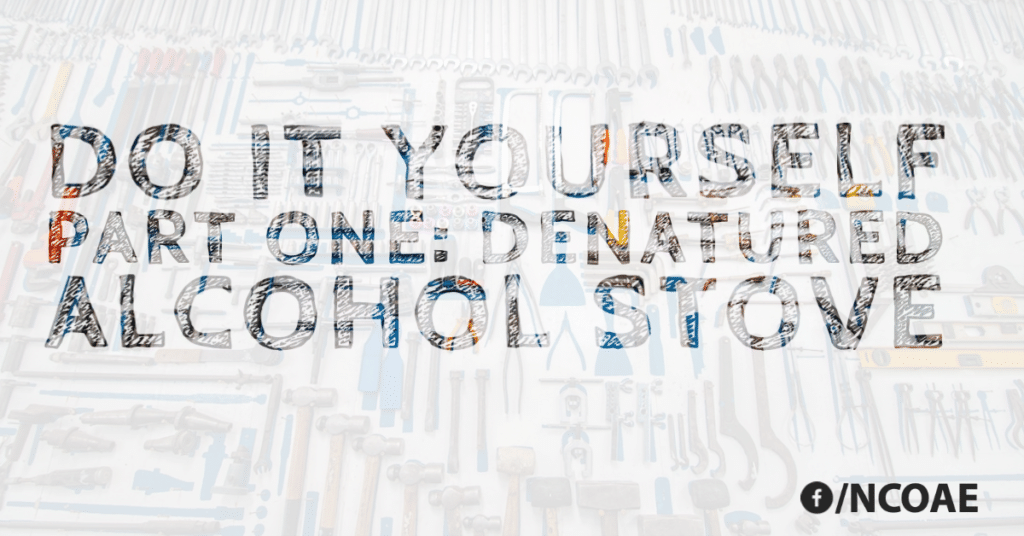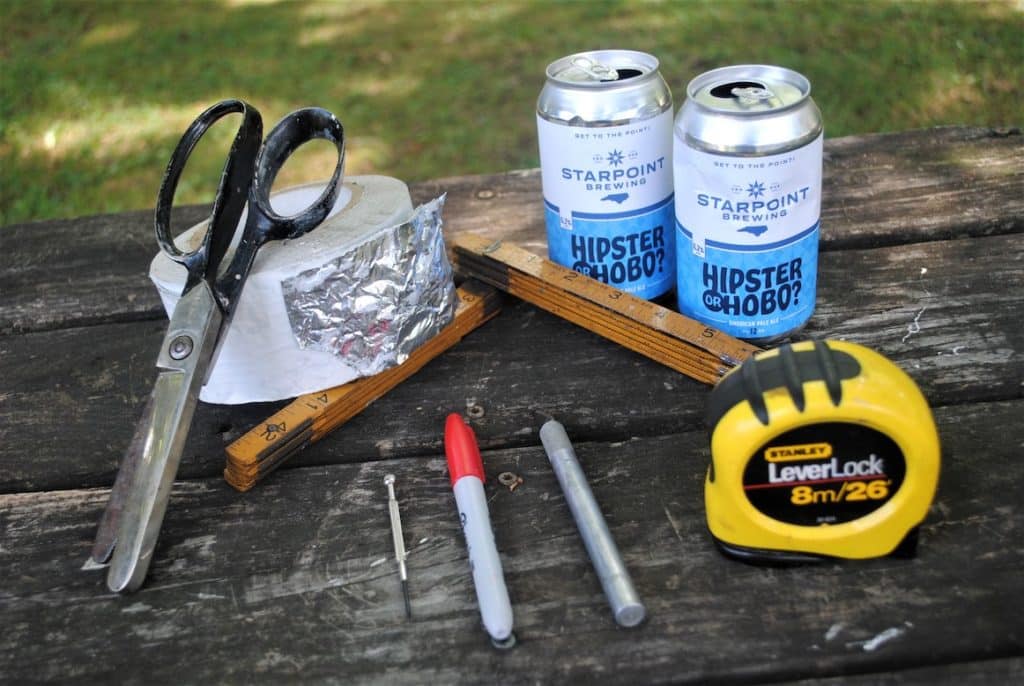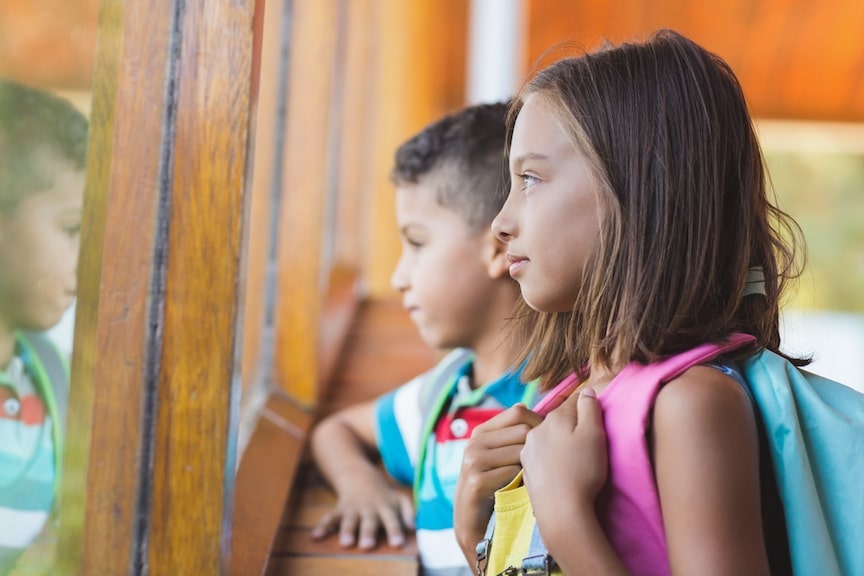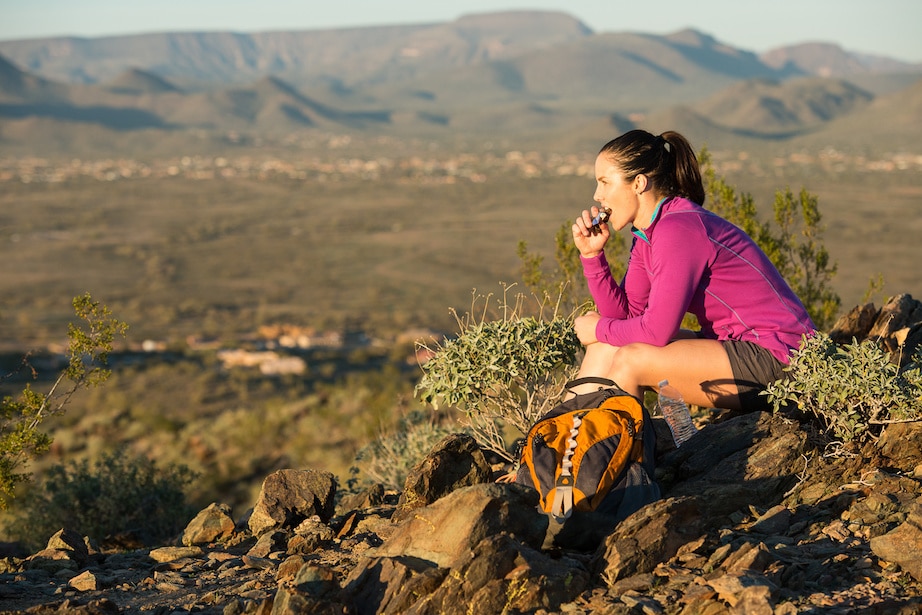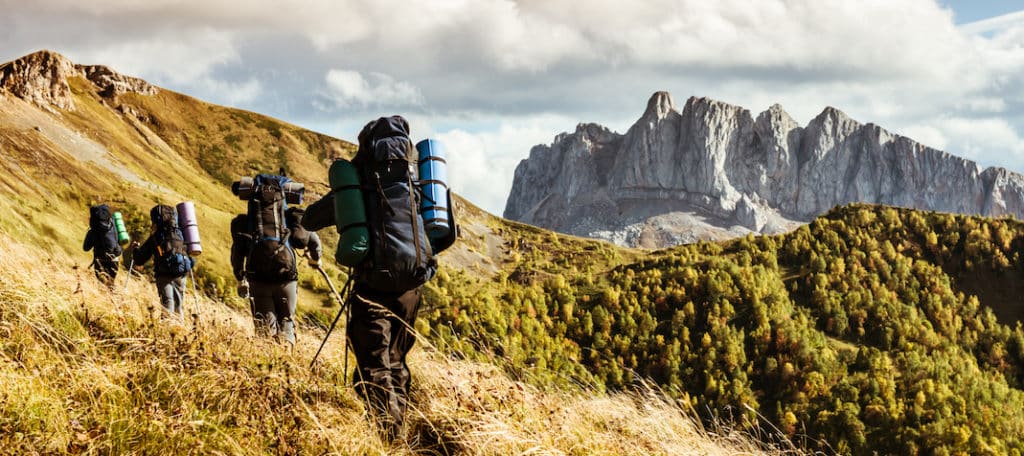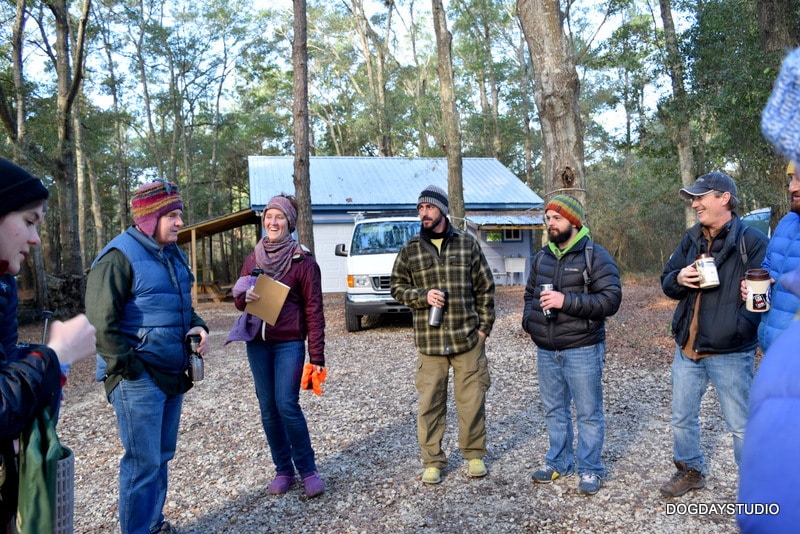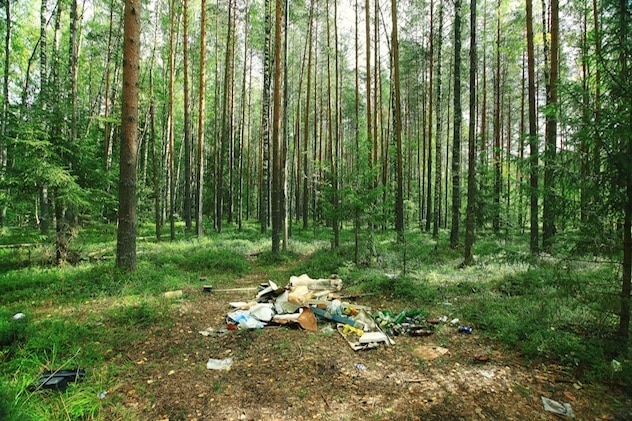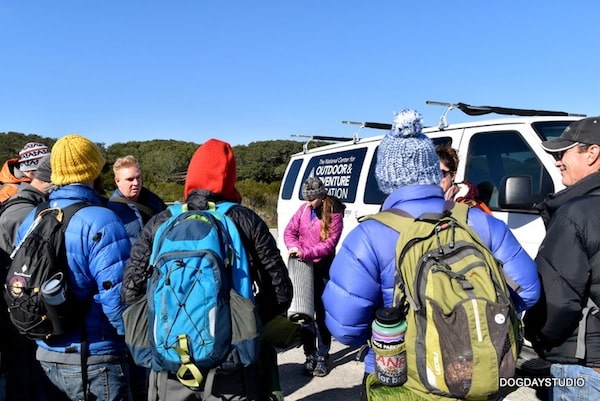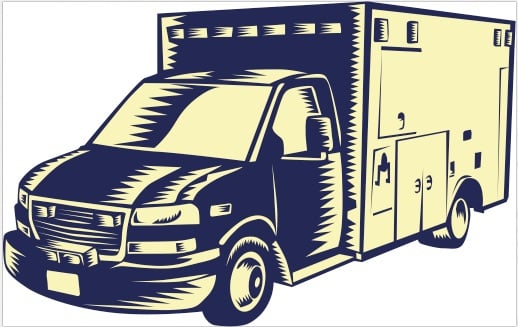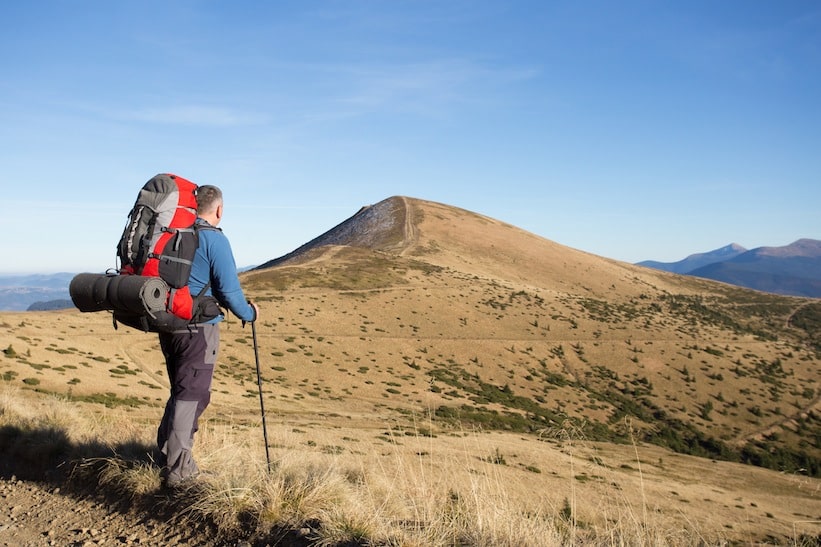Safety in the Backcountry: Deciding When to Bail on a Trip or Adventure
Risk Management“What matters most is how well you walk through the fire.” ~ Charles Bukowski
When it comes to just about every worthwhile pursuit, the more you put into it, the more you get out. In the context of human-powered outdoor adventures, especially those that test your metal, that means pushing the limits and, for those of us who are thrill-seekers, risking life and limb.
Spending time in the backcountry is often more than simply experiencing the great outdoors; it often entails exposing ourselves to, and overcoming, adversity. Through the process, we hone our outdoor skills and build strength, coordination, and character.
Part of the attraction and much of the fun we experience when we engage in extreme outdoor activities such as mountaineering, whitewater rafting/kayaking, rock climbing, skiing, snowboarding, and so on, is the thrill. We choose to expose ourselves to an increased risk of injury or death, because that’s part of what makes extreme sports so much fun.
The secret to success is managing risk and adversity so an outing becomes a thrilling challenge while still preserving life and limb. While we crave an epic adventure that we can live to remember and talk about, achieving the right balance often involves deciding when to bail; when the balance between risk and reward is weighted far too heavily on the side of risk.
Here at The National Center for Outdoor & Adventure Education (NCOAE), we recommend using the following Safety-Fun-Learning Triangle as a guide to achieving the right balance:
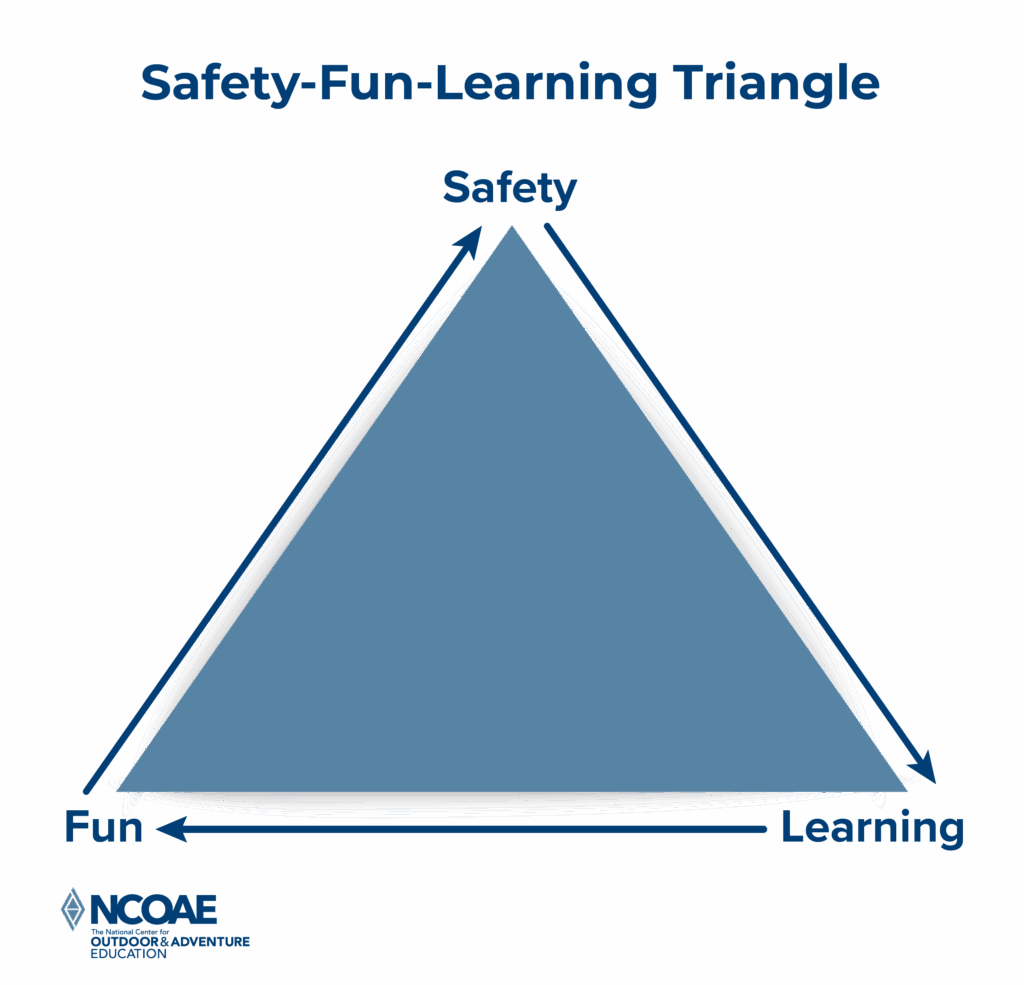
Pre-Trip Bailing
It’s late on a Friday night and the floor is littered with maps, satellite images, weather reports and info I received from reputable sources.
Teeming with excitement, my brain narrows in on the largest, wildest expedition I can put together with the info in front of me. As the early morning hours of the next day approach, I have pared down my list to one or two realistic options (realistic for me).
Regardless of whether I am consciously aware of it, this trip planning I routinely engage in almost always involves pre-trip bailing. I start with “visions of grandeur” (more…)
Choosing Safe, Comfortable Campsites
Backcountry PrepBleary eyed from a scarcity of shuteye, you shimmy out of your sleeping bag, stick your head out your tent flap, and observe your campsite. It’s not a pretty picture. In fact, it looks like you woke up in the middle of a yard sale. Or the tail end of a party turned bad.
There’s gear spread out everywhere, a tarp blown up against a tree, protein bar wrappers discarded by hungry racoons. And now it’s time to pay the piper for last night’s decision for selecting and setting up a terrible campsite.
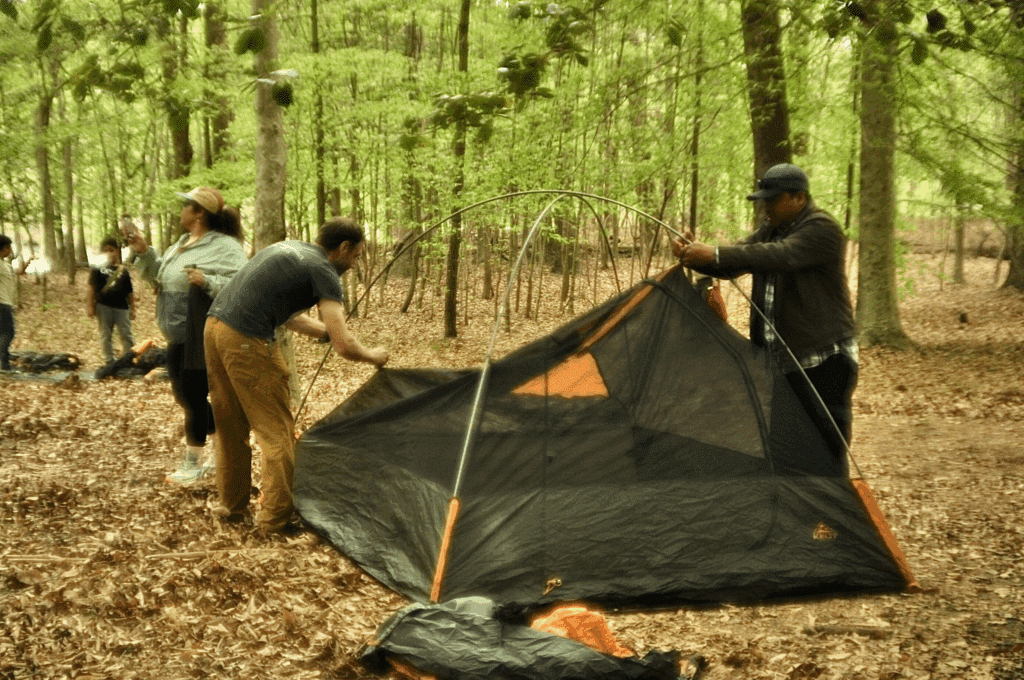
It happens. Sometimes it’s due to unpredictable weather, poor planning, inexperience, or just bad decision making. Fortunately, you can take steps to reduce its frequency. This post explains how, but first, let’s look into the importance of even having a quality campsite.
What’s the Big Deal Over Selecting and Setting Up a Quality Campsite?
Campsite selection, setup, and management aren’t always a top priority. It’s something we outdoor adventurers often do “on the fly,” when the need arises. However, the more thought and planning you put into it, the safer and more enjoyable your camping experience will be.
When contemplating the construct of a up quality campsite, you might want to consider the following factors:
- Safety: Providing protection from the weather and its effects, as well as from natural and human elements and neighboring campers ensures you’re not posing a risk to anyone’s safety.
- Comfort: You need to seek a sheltered area with a patch of soft, level ground to sleep on and an area where you can eat your meals in comfort.
- Efficiency: You should have enough room to organize your food and gear for convenience, and you want easy access to water and places to use the toilet and wash your dishes.
- Ecology: You want a campsite that’s conducive to practicing Leave No Trace (LNT) Principles. For example, try to find an established campsite instead of one that requires clearing vegetation.
Including Campsite Selection in Your Trip Planning
The process of choosing and setting up a proper campsite in a quality location should begin well before you embark on your backcountry adventure. During our pre-trip meetings with groups or during training sessions, we always talk about what makes a good campsite and important factors we need to consider before choosing sites.
When planning a trip and thinking about where you will spend the night, take the following factors into consideration: (more…)
The Three Bears: Part 3 — Decision Time for the Trailbike Rider
WildlifeEditor’s Note: Below is final part in Stephen Mullaney’s three-part series of essays about encounters with bears in the backcountry. The first essay in the series recants the shock Stephen experienced with one particular bear encounter, while the second essay in this series attempts to find humor in a persistent bear taking up quarters in an NCOAE camp late at night. This time around, Stephen — who serves as Director of School Partnerships here at The National Center for Outdoor & Adventure Education (NCOAE) — writes about a timing issue.
Decision Time for the Trailbike Rider
When NCOAE offers larger courses or custom outdoor education courses, we try to have a floater in the field. The floater is an instructor who knows the course area, can navigate to multiple groups in a single day, and has the ability to be flexible and help out when groups are in need of extra support.
I enjoy being a floater because it allows me to see the NCOAE field staff in action. To watch an NCOAE instructor teach is inspiring to me. It also has the added benefit of allowing me to discover different approaches to teaching our curriculum. As a result, being a floater is akin to real-time professional development.
On one particular wilderness course for which I was the floater, we 11 crews/groups in the field. Because of the distance between the groups, the terrain that would need to be traversed, and the need to reach groups quickly, I figured using a trail bike was a no brainer. I could get to each group every four days and still be able to respond to any group that may need outside support in a quicker fashion.
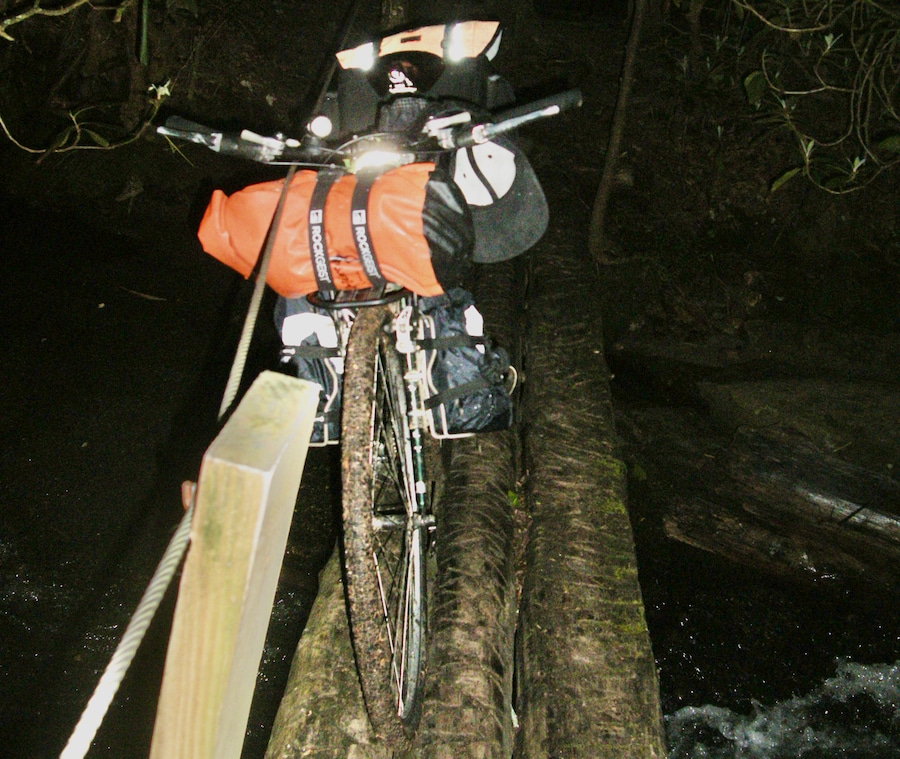
Each day I woke up, left the crew with which I had spent the night, and headed off to meet the next crew before they had even had their breakfast. Then I was off to the next group before lunch, and I usually showed up to meet my final crew for the day a little before dark. Or very much after dark depending on circumstances.
(more…)The Three Bears: Tales of Terror and Trepidation — Part 1 “The Shock”
WildlifeWhen folks find out that my work often takes me into the backcountry, one of the first questions they usually ask me is, “Have you ever had a run-in with a bear — a bear encounter?”
After I tell them that I have had run-ins with bears in the backcountry, they ask what’s that’s like. And that’s when I share that there are many emotions attached to an encounter with a bear in the wilderness, ranging from shock, to humor, to the sudden and unexpected “meet and greet” where you wonder, “Am I going to have to physically engage with this bear?”
First up in this three-part series on bear encounters in the backcountry is a true story about ashocking bear encounter.
A Shocking Bear Encounter
It was Day Two on a multi-day backcountry expedition when someone in the group needed to stop and use the facilities, meaning off the side of the trail. The hiker asked for the “Poop Kit,” which contains hand sanitizer, a trowel to dig a hole and everything else needed for a semi-comfortable sitting.
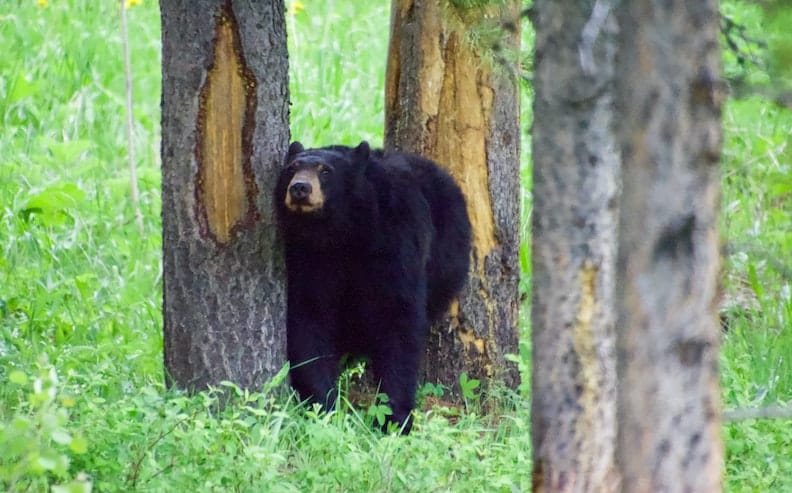
Problems arose when no one could find the kit. As an aside, when traveling as a group, each participant is responsible for carrying the same communal gear each day — that way, nothing gets lost. So, who had been carrying the kit for the entire trip?
A voice spoke up, “I’m supposed to have it, but it’s not in my bag.”
Someone else said, “I saw it by the fire ring this morning while we were getting ready to head out.”
Not too happy, I looked at my co-leader and told him, “One of us needs to hike back and get it while the other gets the group into camp.” I lost the coin toss, and prepared to head back to get the kit. Wanting to travel light, I hung my backpack up in a tree, grabbed a snack and a bottle of water and headed the four miles back to the previous night’s campsite.
(more…)Returning to School? We Want to Help you Safely Opt Out(side)
UncategorizedIn recent weeks, we’ve all been hearing more and more from parents, educators, and even the nation’s top disease experts on the impending opening of schools across the nation.
Dr. Anthony Fauci, who heads the National Institute of Allergy and Infectious Diseases, has suggested that school districts developing their plans for campus reopening should find ways to offer as many outdoor activities as possible. Fauci said that could include everything from outdoor classes, to recess, and lunchtime.
Plans for just when and how schools will reopen are being formulated and fine-tuned, and the consensus seems to be that being outside is the safest place to be during the instructional day. As states start to mandate returns to school, safety and quality of education are at the forefront of design.
Obviously, you’ll get no argument about that from those of us here at The National Center for Outdoor & Adventure Education (NCOAE). And we have some suggestions. But first, here are the questions we are hearing most often from you.
Why move outdoors?
Doctor Fauci already told us that spending time outdoors is safer during times of infectious diseases, and we’re puzzled why some schools forget that being outside is often best for our physical, emotional, and mental well-being. Studies have shown that, in districts with high numbers of second language students, learning outdoors is (more…)
Inspiration Through a Journey of Exploration: Part One – Alex Hotchin
InspirationThis week we begin the first in a three-part series called “Inspiration Through Exploration” where we will see how gifted and novice travelers alike can document their adventures through artwork, photography, writings and other means.
Today’s inspiration comes from Australian Alex Hotchin and her beautiful — and very unique maps. Next week, we will explore the photography of Federico Cabrera in his “Their Only Portrait Project.” And in Part Three, we will see how primitive and print journals are emerging, with representation from both the Adventure Journal and Bikepacking Journal.
What we here at the National Center of Outdoor & Adventure Education (NCOAE) hope to accomplish in this series is to inspire outdoor enthusiasts to document their adventures in new and fascinating ways. Too often we just pick up our smartphone or camera to grab a quick shot of a passing bird, a mountain formation, or the cool gear of the hiker in front of us.
We are hoping to encourage you to move outside the boxes (devices, phones, computers) that are typical of modern-day sharing. For example, I carry a camera on my bicycle, usually strapped to my climbing harness or in my boats. Ninety-nine percent of the time I don’t touch it. So, why carry it at all? Because maybe one percent of the time, I see something that I want to help illustrate the story and memory of that specific moment in time, during that specific journey. I like to take pictures of the unexpected.
Most of the time, I also carry a roll of colored pencils and a notebook. Drawing takes more time, so it forces me to stop and think about how to best combine lines and colors to represent something meaningful to me and to connect my story with those who might see it later on.
Many times upon returning from a long outing or expedition for NCOAE, I show my family and friends my journal, drawings, and photos to accompany my stories. This gives people the opportunity to come up with questions, engage with the landscape and not just ask, “How was your trip? “What did you do?” Sharing on a personal level allows for a secondary depth of exploration, face to face (or six feet apart for now).
Meet Alex Hotchin
Alex is an illustrator who creates books and maps to tell her stories. Her illustrations are inspiring and the maps she creates are personal to herself and to her specific journeys.
When looking at Alex’s work, you get the sense you have actually joined the journey. Alex takes two-dimensional representations of maps and makes them jump off the page. Scale is not specific to cartography, with the scale offering viewers a look through the artist/adventurer’s eyes. What she saw out there — the beauty, the obstacles and cultural significance — is laid out before us in lines, shapes and colors.
Can you actually find your way using her maps? I suppose that depends on where you want to go. We asked Alex to provide us with a little detail about the work she does, and here’s what she had to say:
(more…)DIY Part 2: Emergency Water Filtration System
Backcountry PrepWe’ve all seen those old Western movies where the hero is crawling on the desert floor with an empty canteen and a parched throat. None of us want to experience that torture. It’s bad enough watching the bad acting. Same goes for heading to the backcountry for a weeklong wilderness experience. Nobody wants to be caught short of fresh drinking water.
Here’s where the do-it-yourself approach to human-powered outdoor recreation really comes in handy. The stove we built in Part One of this three-part DYI series, can be seen as an inexpensive alternative to a store-bought stove, and as a tool to help us understand how camping stoves work. Because the more we are familiar with the inner workings of equipment, the more likely we’ll be able to solve challenging issues with that stove.
It’s a given. Your gear will fail you.
That being said, the water filter we’re building today falls more into the understanding of how filtration systems work. Again, if we comprehend how our equipment works, we can better take care of that gear and repair it when it reaches a point of failure. And, if you have spent a considerable amount of time traveling in wild places, you know that your gear is eventually going to fail.
First off, there are three tried and true methods of water purification — boil, filter (purify), and chemical treatment. (For more on this, read Stay Sharp in The Offseason By Following the Way of the Farmer, available here on the NCOAE Blog.)
The industry standard when traveling with groups on guided trips in the backcountry is the use of chemical treatment, typically Iodine. That’s because Iodine is inexpensive, easy to carry, and highly reliable. Many outdoors enthusiasts use a commercially available filter, life straw, or gravity feed system. Not surprising, many don’t know how they work or how to repair them in the backcountry. This lack of knowledge has cut short many a trip due to a water filtration failure.
Once, while traveling in Nepal with a group of students from NCOAE, I was almost forced into building a water filtration system like the one we describe below. One of the participants swore he was having a reaction to the chemical treatment. And, because the mental perception of one individual can affect the entire group, when water quality is in question, we need to overcome that obstacle. My thought was to create a filter system that would not only educate the students but keep everyone safe — whether that danger was perceived or not. Fortunately, it never came to that.
(more…)Do it Yourself Part One: Denatured Alcohol Stove
Backcountry PrepVisitors to our blog are going to react in one of two ways when they see an article with “Do it Yourself” in the headline. You’re either going to avert your eyes and try to find a less intimidating article. Or you’re going to greet this headline and subsequent instructions with enthusiasm and frenzied fervency.
Here’s hoping you’re among the second category of DYI folks who revel in the experience of creating things from scratch. You know, those Junior MacGyvers who’d rather spend a weekend creating a project than spend nine bucks for the same item at the store.
That’s why we’re dedicating the next three posts here on the NCOAE blog to help you find what we hope is the do-it-yourselfer deep in your soul. Here at The National Center for Outdoor Adventure and Education (NCOAE), we have always used the equation of Self + Community + Action = Impact. It’s the notion of making the changes necessary to feel better about yourself and see your role in a community of peers, practice, neighbors, or just society as a whole.
Through our outdoor education and wilderness medicine programs we have helped countless individuals and organizations — through interaction with nature and wild places — to move forward to a more conscious way of living life and perhaps influencing the world around them. Just look at the many companies that were born of DIY thinking. There’s Patagonia, Petzl, Outdoor Research, Swift Industries, Black Diamond, and pretty much everything related to the surf industry.
So, for this installment and the two that follow, we will be exploring the DIY experience of creating equipment destined for human-powered outdoor pursuits, either for fun or out of necessity. We find that DIY projects give you a taste of the experiential education process from the comfort of your own home or garage.
And Part One of this series is how to make a denatured alcohol stove.
Years ago, I made the beautiful mistake of buying “Beyond Backpacking” by Ray Jardine. The mistake? The book inspired me to begin purging my gear, make my own gear, and learn how to go light for less money. Gearing up for a huge trip inspired me to follow the “Ray Way.”
It was around that time that I built my first denatured alcohol stove. The process is straightforward and acquiring the materials can be a lot of fun. For instance, you’ll need to empty a couple of soda or beer cans before you even get started. Any beverage can will work, but some folks would prefer to drain a can of beer. Because building this stove is about the experience and the pursuit of learning. And, of course, the enjoyment.
(more…)Finding Adventure in Education That’s Taught Online
Experiential EducationSo, here we all sit, settling into another sequential week of sequestered sheltering and supreme seclusion, many of us working from home and many of us not. As a certified teacher with a license in EC, ESL, AIG and Classroom Education, and as a member of The National Center for Outdoor & Adventure Education’s (NCOAE) leadership team, I admit I was caught off balance by the virus named “SARS-CoV-2” and the disease it causes, named coronavirus disease 2019 (COVID-19).
Like getting smacked upside the head by a wayward surfboard.
This stay-at-home edict forced me to search, find, and deliver a completely new approach to educating my students. And I had zero time to waste. There were students to contact. More important — I had to learn ways to communicate with them face to face and get them engaged through online platforms. And I felt the pressure to do all of this ASAP!
I quickly discovered that my side was already behind — and hindered by handicaps. The major hurdle? I have never owned a cell phone. Essentially, I’m a caveperson. Then I remembered what it is we outdoor and adventure educators constantly preach to our students: Step out of your comfort zone and adapt in the time of coronavirus.
It was time for me to do just that. Over the first few weeks operating under shelter in place orders, I learned how to use Zoom for video conferencing and Google classroom for creating, distributing, and grading assignments in a paperless way. I also quickly adapted and learned how to use additional online platforms to connect with students, co-workers, and community members. And through this process, I learned that our new and hopefully temporary wilderness is the Internet, where we continue the exploration of creativity and the delivery of instruction.
(more…)Gratitude is an Action Word for NCOAE Staff
Life At NCOAEGratitude is most often used as a noun, describing as it does, the feeling of being thankful. This warm and comforting word is often bandied about during the holidays, when we reflect upon all of the things for which we are grateful. But for some of us — and in particular, many of our staff members here at The National Center for Outdoor & Adventure Education (NCOAE) — we treat the word gratitude as a verb.
Great employees often live in gratitude by taking positive action. And that means being present for others, which includes listening to their issues or desires and connecting with them. It also means becoming the person that someone else is grateful for.
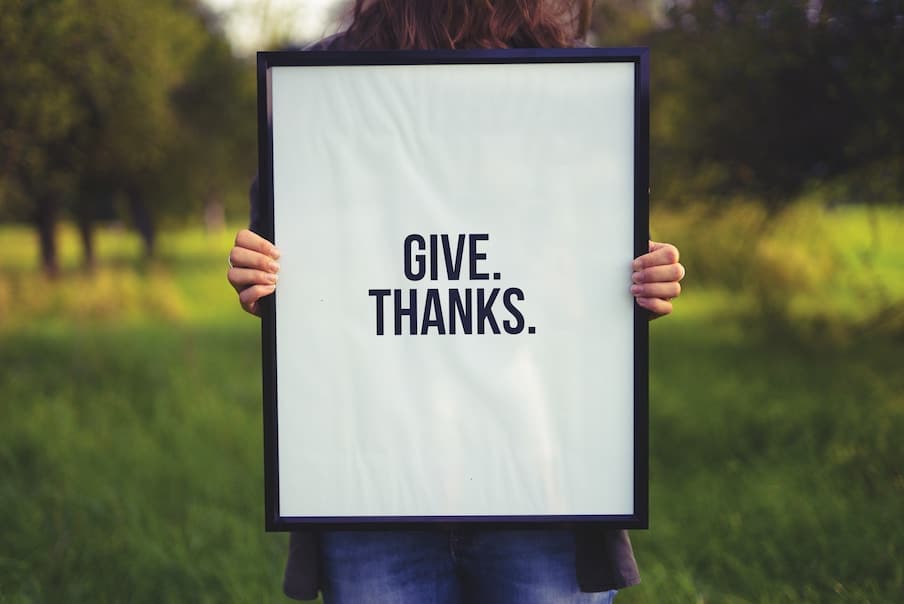
Image © Simon Maage (sourced from Unsplash)
Just before the holidays truly got underway, we asked some of our staff members to list just some of the things for which they were most grateful. We’re not the least bit surprised that some of their comments encompassed our students and fellow staffers.
Here’s their take on gratitude, in their own words: (more…)
Summer Vacation: When the Real Education Begins
Outdoor Education ResearchThe final bell has rung and children at public and private schools across the nation have cleaned out their lockers and headed out the doors and hopefully, outdoors.
Some of these children are departing schools that rarely allow their students to get down and dirty in the outside world — such as Polaris Charter Academy on Chicago’s West Side, where the school’s 450 students had been kept indoors due to fears associated with gun violence. In other parts of the country, fewer students get the opportunity to truly explore the world outside the playground or even lie down in the grass and point out the significance of cloud formations above.
These same schools, for a variety of reasons, don’t take the time to schedule impromptu short excursions to neighboring parks and wilderness areas, teaching students the names of native birds, plants and trees, pointing out urban and suburban wildlife, or following a slow-moving creek to a larger, more rapid tributary.
But just because most schools don’t fill that obligation doesn’t mean families can’t take over the job now that summer has arrived. The objective is to send these kids back to school in the fall — freshly cleaned up and rested — with heads full of new connections to the natural world.
So how do our children and students truly benefit from outdoor and adventure education? Here’s a short list of the positive attributes of wilderness exploration: (more…)
How and Why to Remove Junk Food from Your Backpack
Backcountry Prep“What’s fructose? What’s GMO? What do these words mean?
These are some of the questions my 9-year-old daughter asked me last June as the family shopped for good snacks for a backpacking trip. By July, my daughter had vowed to stop eating food with “junk” in it. And to date, she has kept her word.
Take a tour of your local grocery store, and peruse the list of ingredients on the back or side of the packaging of many of those so-called healthy snacks. You might be unpleasantly surprised to find that an abundance of these products tout themselves as containing all natural ingredients, when in actuality they contain just the opposite.
It’s a bad habit, but often when we shop for those “in-between foods” (between meals), we’ll grab up what looks good or is easy to pack. Or we find ourselves purchasing items out of habit or convenience. But the truth is on the trail:
Sugary, high-calorie snacks never translate into positive energy.
Time for Change
We’ve all experienced the benefits of using (more…)
The Time to Begin Preparing for Summer Adventures Started Yesterday
Life At NCOAEHere at The National Center for Outdoor & Adventure Education (NCOAE) you can find us toiling year-round to bring our students and clients the very best in guided outdoor adventures with meaning. So, as far as our staff is concerned, we’re always in the “getting ready mode” for outings in the wilderness.
But as we approach our busiest time of the year, we’d like to pose some questions for our seasonal participants:
- What are you doing to get ready?
- What does it mean to be ready?
- Can we ever really be ready?
Let’s distill outdoor preparedness into three categories, Physical, Emotional and Gear.
Physical: Lounging on the couch with a belly covered with unnaturally orange Cheetos dust while watching 180 Degrees South: Conquerors of the Useless for the 100th time might suggest it’s time to get busy getting fit before you head out on a course.
Whether that entails short hikes with heavy bags, bike rides across town, hitting the gym or some distance running, it’s entirely up to you to decide what works. Just know this. Time’s ticking and the first summer excursions are less than the turn of a monthly calendar page away.
Emotional: So you’ve been hiking, biking and swimming and you’re feeling like you’re getting your mojo back. Swell. Now it’s time to prepare mentally for what lies in store on the trail.
Take a moment. Close your eyes and picture your favorite course area. It’s easy to recall the bucolic views, pristine settings, and warm campfires at night. But they say pain has no memory. Now think about an unrelenting sun beating down on you, or a trip that featured nothing but rain, day and night. Your gear and body are getting funky, you’re exhausted. And when you look around, you notice your fellow course mates appear to have been (more…)
NCOAE Instructs the Instructors Through Instructor Candidate Training Program
Working at NCOAEWithout going completely overboard, we here at The National Center for Outdoor Education & Adventure Education (NCOAE) liken our popular Instructor Candidate (IC) training to a Hollywood red carpet event — without the egos or trophies.
That’s because this training attracts the best wilderness educators in the world to our North Carolina headquarters for five days of curriculum design and delivery training. It’s a time when NCOAE’s instructors get to work directly with some of the most highly qualified outdoor educators in the industry.
This “invitation only” event draws participants who have worked for other companies and schools on both the domestic and international levels. By the time they arrive on our campus for IC training, they are often looking for something different — something more meaningful.
As NCOAE instructors, we think of this educational training and refresher as a time of (more…)
Let’s Start a Conversation About Land Use Management
WildernessMore and more individuals, families and outdoor organizations are going to great lengths to enjoy wilderness experiences in our national forests, but with this exploding trend, how are we addressing the impact on natural resources? What does the future hold for outdoor recreation areas and natural setting outdoor classrooms?
As professional members of the outdoor industry, we are constantly trying to increase the numbers of programs and the number of students who participate in outdoor recreation and adventure programming endeavors. We look for course areas that are pristine — mostly because no one else is visiting those areas — yet. But the reality is this: If we are researching an untouched course area for our organization, you can bet there are a hundred others doing the same thing.
As educators and outdoor education administrators, we know that in order to appreciate and protect a natural space, have to engage with it. To be shaped by the beauty of the outdoors, you must be given the opportunity to live in it. How can you appreciate and protect something you’ve never engaged with or seen?
The outdoor industry has been working with the (more…)
Wilderness Problem Solving Often Requires Response to a Question
Wilderness CookingIt’s the end of a long day trekking through the backcountry. Tents are being set up, water is being collected and brought to the campsite and everyone is tired and hungry.
A conversation ensues:
Student: The stove won’t light.
Instructor: Okay.
Student: Should we fix it?
Instructor: Do you need it to cook dinner?
Student: Yes….we should fix it.
At this point the expedition, the cooks begin to “field strip” the stove. They remove all the parts, grease the gaskets, clean off the dirt and grime, then check the pump and screens and look for impurities in the fuel. After cleaning up all the parts, they reassemble the stove, pump it, light it up, lean down and listen closely.
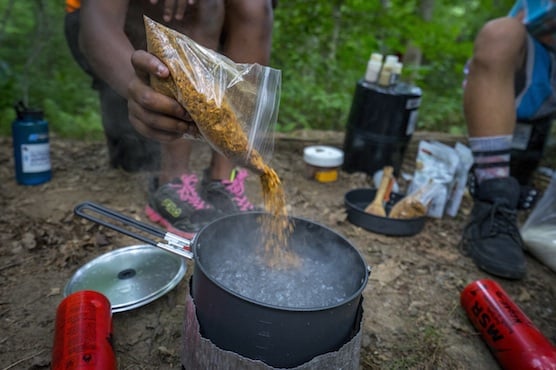
Aha! There it is. The jet sound that is the sign of a happy working stove! Smiles are exchanged among the fledgling backcountry cooks because they know they prevented a potential disappointing dinner experience.
Every new generation of leaders needs to acquire the skills necessary for problem solving and they need to practice those skills. They must develop a (more…)
How To Become an Outdoor Educator and Work in The Backcountry
Working at NCOAEOftentimes after a successful outdoor adventure, at least one smiling student comes up to me and says, “Man, I wish I had your job.”
Well, of course you do. As far as you know, I’m getting a paycheck for camping, climbing, paddling and exploring in some of the most beautiful spots on earth. That part’s true. As outdoor education instructors, we get to work with others who share that passion for the wilderness. We love the job and we can’t think of another occupation that would be half as satisfying.
But there’s a lot that goes on before you can go out and bag that dream job. And just looking the part isn’t enough to get you in the door and on the trail.
We want to give you some preliminary — quick and dirty — career tips for those who are serious about becoming an outdoor educator, experiential educator, and/or an adventure educator. Throughout the year we will revisit this topic with additional tips and offerings from the experts here at The National Center for Outdoor & Adventure Education (NCOAE).
Here are a few of the basics for obtaining that sought-after outdoor educator position, starting off with a short rundown of high-level skills and certifications you’re going to need to get started: (more…)
It’s a Good Week to Honor EMS Professionals
EMT Training“Adventure First, Education Always” is the rallying cry here at The National Center for Outdoor & Adventure Education’s (NCOAE). What you’ll find embedded in that statement is our commitment to students that they will return from our courses and trainings mentally, educationally and physically prepared for whatever brought them to us in the first place.
To that end, we offer a number of training courses that keep outdoor educators and backcountry guides up to date on the standard of care and best practices when managing medical emergencies in wilderness settings. In addition, we offer to the best of our knowledge the nation’s only 19-Day ‘Intensive’ EMT-Basic Training course.
EMT stands for Emergency Medical Technician — clinicians, trained to respond quickly to emergency situations regarding medical issues, traumatic injuries and accident scenes. Those clinicians tend to work with the EMS space, which of course stands for Emergency Medical Services.
People call EMS when they have had an accident or are experiencing a medical emergency, including heart attack, difficulty breathing, a fall or accident, drowning, cardiac arrest, stroke, drug overdose or acute illness. As a result, EMS professionals may have to provide basic and/or advanced medical care at the scene of an emergency and en route to a hospital.
Which brings us to the point of this blog post: (more…)
The Longer the Course, The Better the Experience
Adult CoursesHere at The National Center for Outdoor & Adventure Education (NCOAE), we offer a wide range of outdoor education and adventure courses, ranging in length from a week to an entire semester. And what that does is offer our students a choice based on their particular circumstances, interests and needs.
By offering dozens of adventures from which to choose, students can easily find a course that fits their schedules, skill levels and price. I think it’s pretty well guaranteed that no matter the length of the adventure, you will have an incredible time. Further, you will be offered a great learning opportunity and most likely attain goals and outcomes that you never dreamed possible.
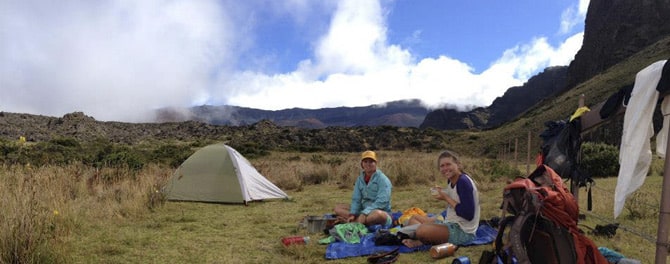
However, I have a bias. And as our staff development director and an instructor, I have every right to have an opinion, based on years of observation. And that bias is this: I believe the longer the course, the better the experience.
I base this assessment on a number of factors, not the least is an opportunity for me to (more…)
The Solo Wilderness Experience: Going it alone is Not a Bad Thing
Outdoor EducationWhen I see people walk out of the woods or trek down a mountainside or yank a kayak out of a river, I can’t help but sidle up to them and fire a dozen questions their direction. In fact, that’s how I recently ended up chatting with a hiker named Daniel inside a Wilmington, N.C., grocery store.
Daniel was standing at the deli counter, looking a little bit weathered, with a well-worn backpack, boots and a relaxed stance.
Me: “You through hiking”
Daniel: “Nope.”
Me: “You going camping?”
Daniel: “Nope.”
Then turning to me, he said he was on a trek from Asheville, N.C., to the coast, mostly on roads and sometimes the interstate. Seeing that I was still paying attention, he continued. “I just got back from over a year in Afghanistan. I’m walking to meet friends and visit family — but mostly I’m spending some much needed time alone.”
I get that. I tell him that’s fantastic.
Daniel gives me a puzzled look and tells me I’m the first person to tell him he’s doing something positive. Everyone else, he says, is telling him he’s wasting his time, living dangerously and achieving nothing.
I wished him well on his journey and we parted. But my limited interaction with Daniel reminds me of the importance of (more…)
TALK TO US
Have any further questions about our courses, what you’ll learn, or what else to expect? Contact us, we’re here to help!
